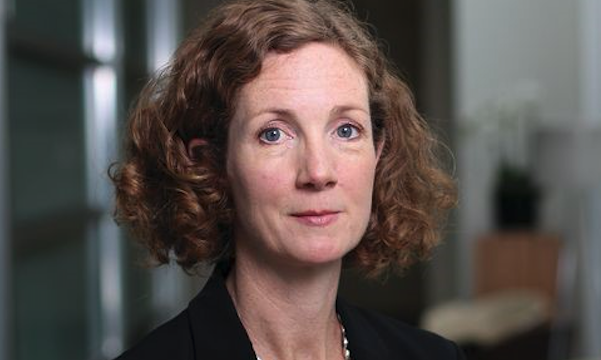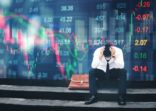Rachel Harris, Aviva Investors
Fallen angels are bonds that have been investment grade-rated (mostly BBBs, which are at the end of the IG spectrum) and are reduced to a junk bond rating.
“There has been quite a lot of discussion about fallen angels at the moment because post-2008, the amount of BBB-rated [bonds] in the market absolutely exploded,” London-based Harris, who joined the firm in January from Janus Henderson, told FSA in a recent interview.
BBB bonds accounted for nearly half of the US investment-grade index at the beginning of 2018 from 33% in late-2008, according to an Alliance Bernstein report.
The risk of increasing fallen angels became a concern last year because of rising interest rates, which push up companies’ financing costs, according to the report.
“There is always a risk when you move into a recessionary environment or a slower growth environment as companies that have levered up will struggle to refinance their bonds,” Aviva’s Harris said.
“But do I see an explosion in fallen angels? Given that I don’t think that a recession is going to happen this year, it wouldn’t be something I would lose sleep over right now.”
Balance sheets, particularly for banks globally, have been in a better position since 2008 as regulators required them to increase their capital ratios, she added.
However, Harris noted that not all BBBs are the same, and a detailed look at the debt of companies with the same rating is necessary.
“We have seen some of the large companies that were downgraded to high yield, but then they were upgraded back to investment grade,” she said. These are considered “rising stars”.
There were 80 non-financial companies globally that held $220bn at the end of December that are potential fallen angels or in the “crossover zone”, which is the rating closest to the investment grade/speculative grade border, according to a report from Moody’s.
There were 19 actual fallen angels in 2018, up from 12 in 2017, but still below the 63 in 2016.
On the flipside, the number of rising stars jumped to 44 in 2018 from only 16 in 2017, the report added.
Measuring risk
Separately, Harris discussed the limitations of measuring risk from a pure market value-basis.
“Let’s say the index has 50% BBBs and fund managers own 60% BBBs in their portfolios. That is not telling you very much about the risk in the portfolio. So you need to look at other measures to see if the volatility of the BBBs that managers own is the same as the volatility in the index.”
One of the risk measures that the firm uses is the duration times spread (DTS).
“If you own a five-year bond with a duration of three and a spread of 100bps, that will give you a DTS of 300. If you own the same bond on the third year and it has a duration of 15, then its DTS is 1,500, which has a bigger risk,” she explained, adding that the higher DTS means that the bond is more impacted if credit spreads widen.
Harris also added the limitations of calculating a bond’s tracking error relative to its sector, which has been a traditional risk management tool among corporate bond portfolio managers, as explained previously by Colin Purdie, the firm’s London-based chief investment officer for credit and manager of the Global Investment Grade Bond Fund.
“It’s flawed because tracking error ultimately looks at where you are in a sector,” Purdie said, adding that individual bonds in a sector do not necessarily have similar risk-return characteristics.
The Aviva Investors – Global Investment Grade Bond Fund versus benchmark


















